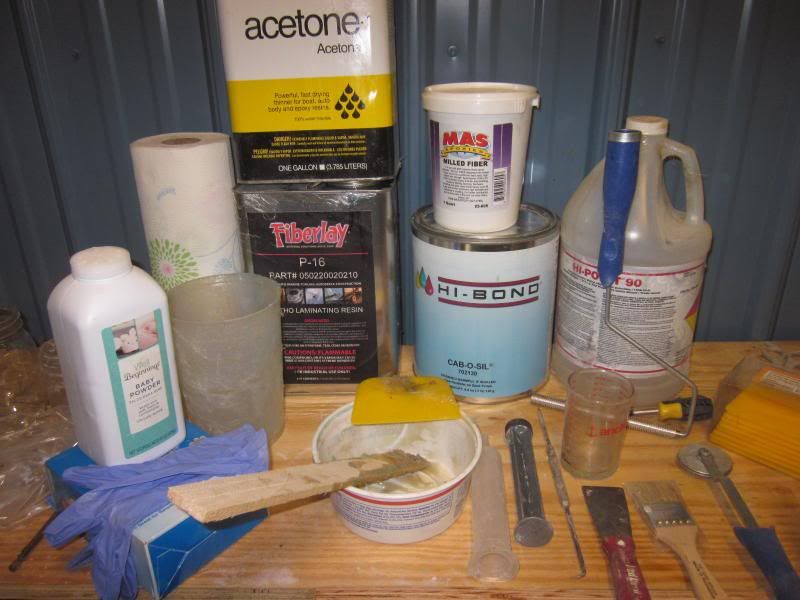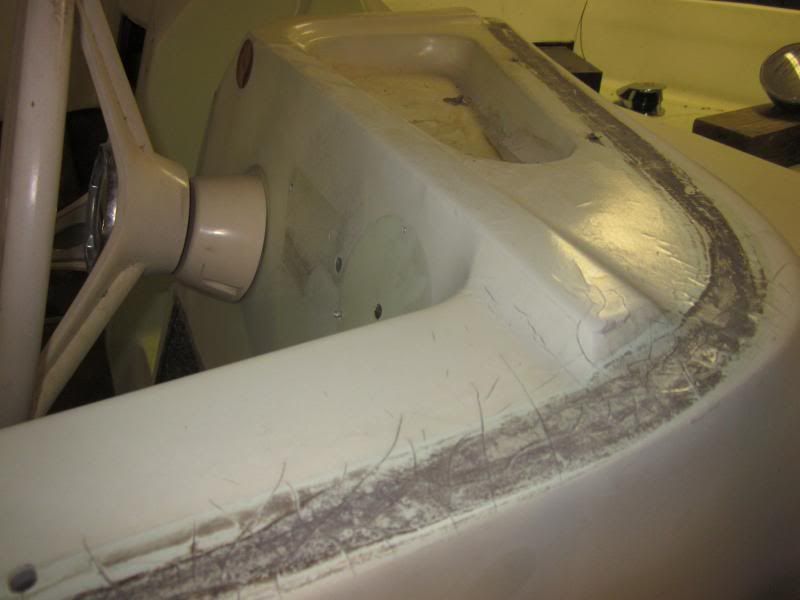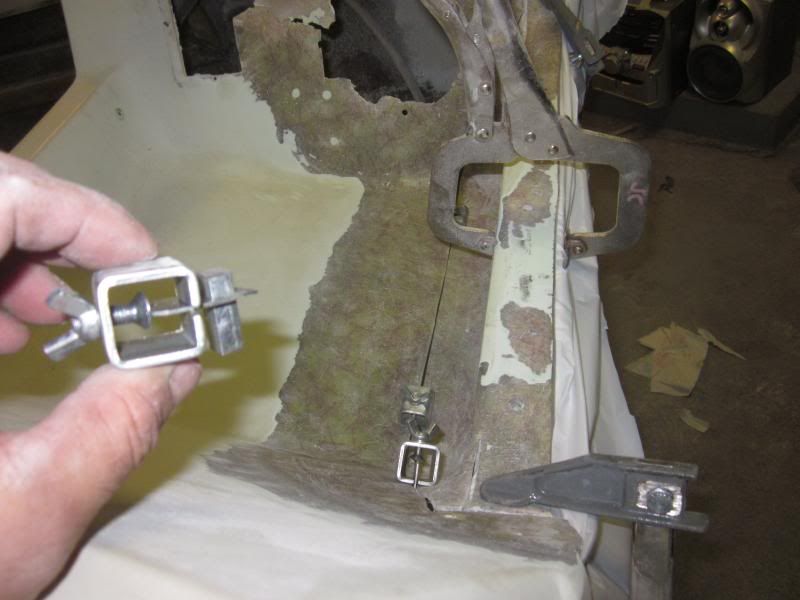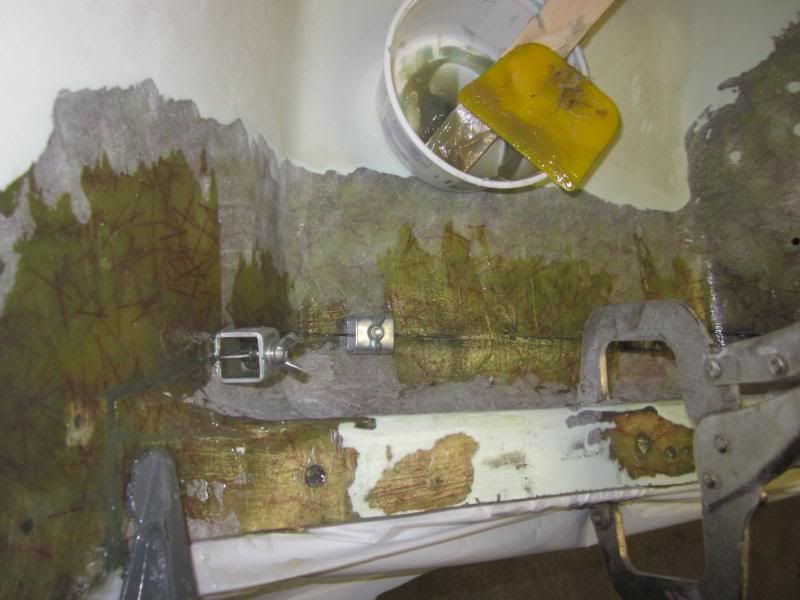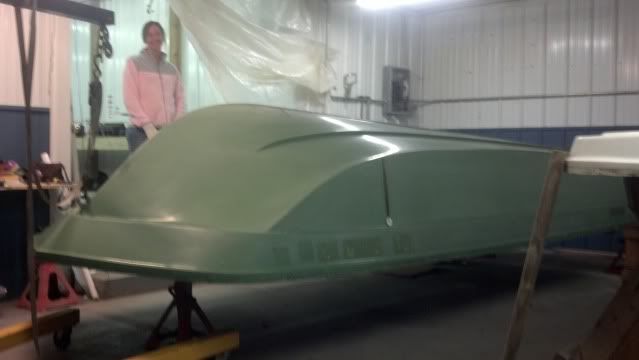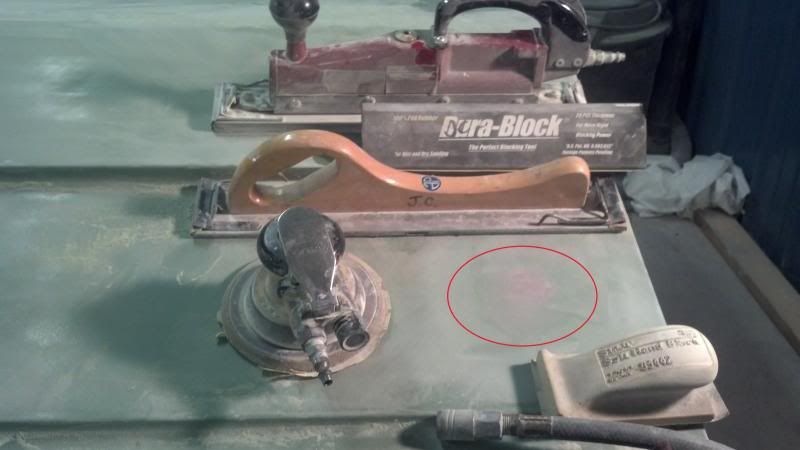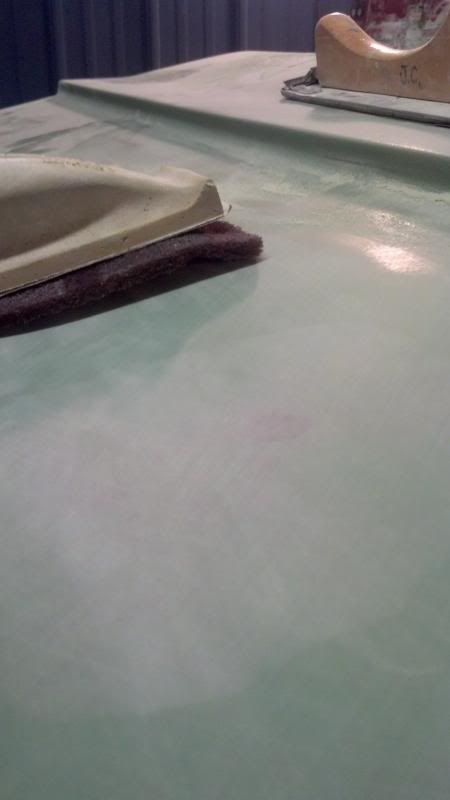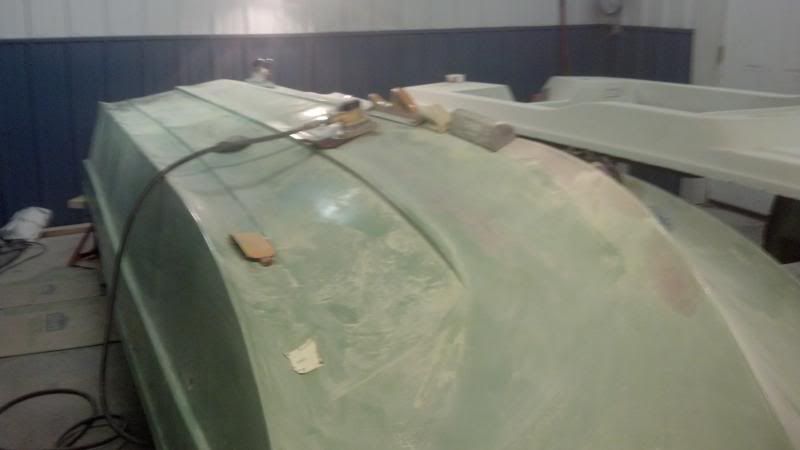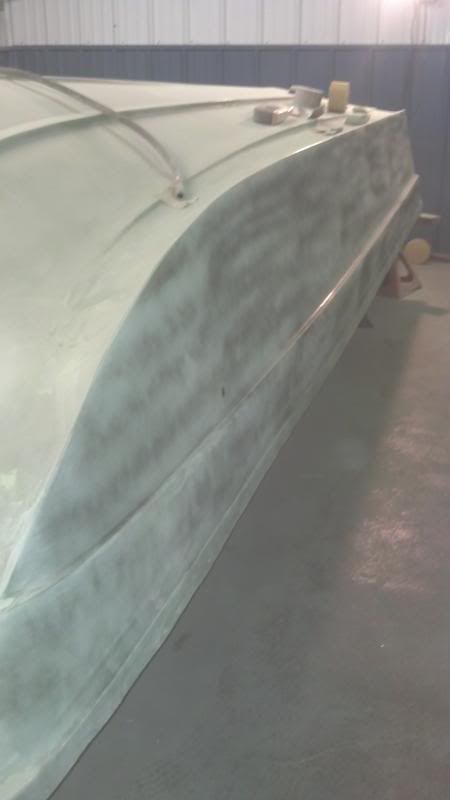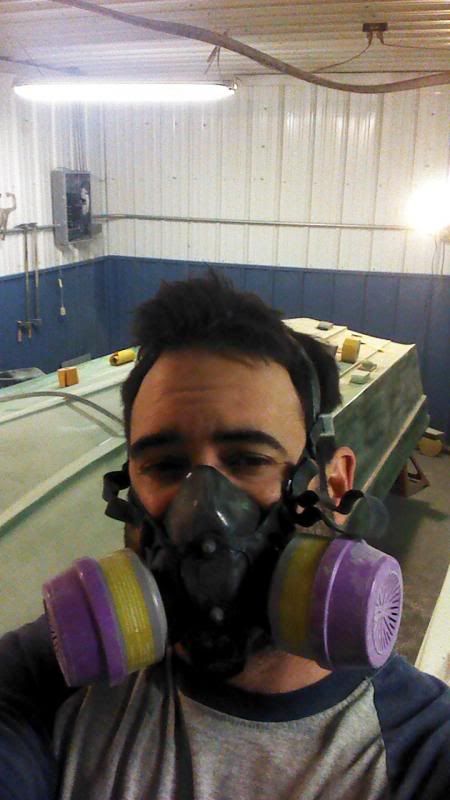Re: 1968 Sportcraft C-Gull work boat project
Thanks guys, been using the medium hardener with the "thick 150" epoxy jigngrub. I use a whole lot less "SM fairing compound" with the epoxy being thick as it is and only mix around 9 ounces at a time. I keep this room at 70 degrees and I've introduced a retired pancake griddle and pot of water for heating up my epoxy and paints during their induction times.
RANT FOR BORED READERS ONLY: Been learning a lot here on this boat project but there seems to be an awful lot being left out on Gelcoat crazing repair.
1) If you block sand gelcoat far enough for a smooth surface in eliminating crazing, you are bound to sand through to the underlying fiberglass(atleast in spots). Particularly on the side of a hull. This underlying fiberglass contains small pin holes(air bubbles) from the lay up process on my cheap boat(which presents another problem). So, you are either using a fairing compound over properly prepared and sanded gelcoat crazing, or you are using it over the pinholes. Shooting epoxy primer over pinholes and crazing does not seem to fill them. (and I'm talking about the random 1/4" long almost microscopic cracks or checking that you absolutely cannot eliminate due to the sheer number of them)
2) Every craigslist search seems to contain MOSTLY, the $100-$1000 neglected run abouts, baking in the sun with shredded interiors, crazed gelcoat, in the backyard and uncovered. These are the boats that were never designed to last this long let alone be restored.
So, what are people doing really? I see that high end boats have their hulls stripped or completely re-faired by imported labor. Are these little trihulls and lower end run abouts all like this? I haven't seen one post about paint failures on the internet or follow up on best kept practices regarding hull rework. Like, "I used bondo and it all fell off". or, "My crazing repair failed and this is why".
I like to become proficient at everything I challenge myself with to prepare me for the next big project challenge (maybe a wooden Chris Craft

and this is kicking my butt!
So far I...
1) Washed the boat with scotch brite and lacquer thinner.
2) Scrubbed all crazing, cracks, dings, etc, clean with lacquer thinner
3) D/a sanded entire hull with 80 grit, scarfing deeper gouges and dings
4) Recleaned hull
5) Faired all dings, scrapes, snap holes, voids, etc with epoxy fairing compound(Several days)
6) Block sanded entire hull above water line areas with 80, 150, then 220 grit as deep as possible with a guide coat
7) two rag method cleaned with PPG dx330 wax and grease remover
8) wiped down with tack cloth
9) Epoxy primed hull
Now I'm left with the almost microscopic small, random, checking here and there in the hull's gelcoat that I didn't see before. Not enough to have redone an entire area, but just random....and too many to have ground them out. they're the size of human hairs!!!!
It DOES look like the epoxy primer infiltrated these. So, I'm using a 2 part USC spot glaze(poly based) over every little miniature check with a squeegee(which seems to fill it perfectly these are teeny tiny mind you), block sanding the epoxy primer at 48 hours, then reshooting another coat.
I'm hoping that the spot glaze will be encapsulated by the two coats of epoxy? What would the pros do on painting a $300 customer boat without a team of dedicated migrant workers and an unlimited budget? Am I over thinking this?
Sorry for the rant. Happy Thanksgiving ALL




















